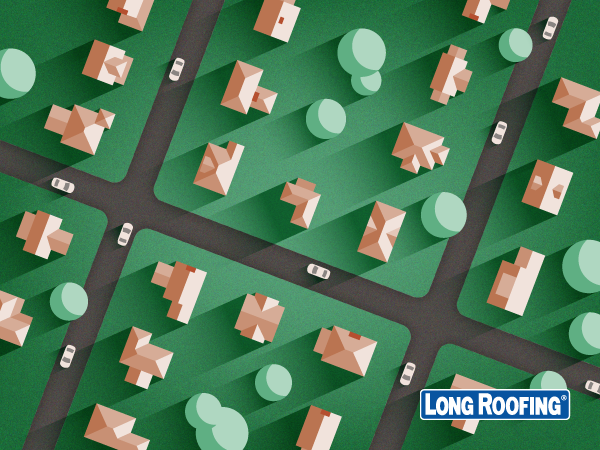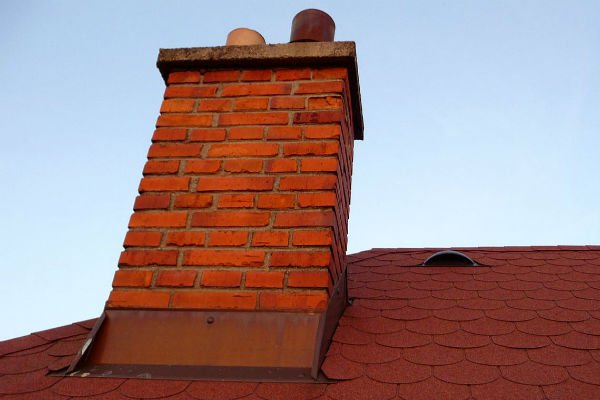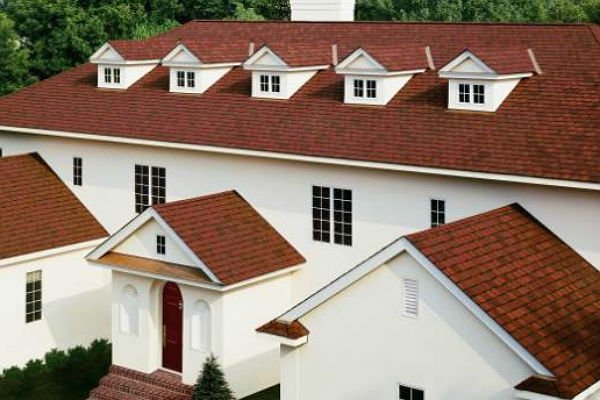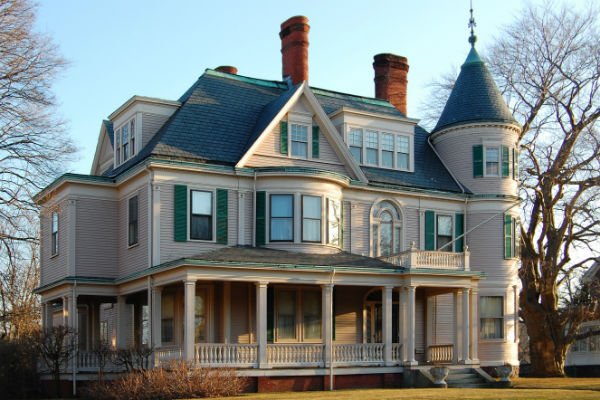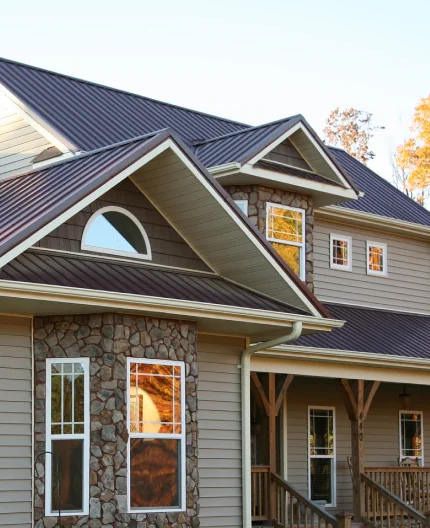Up on the Roof: How the Stuff on Your Roof Affects a Roof Replacement
Published on Tuesday September 20, 2016Take a look at your roof. Is it a perfect, flat square? Or a smooth, sloping hip roof with nary a chimney, dormer, vent or turret in sight? If that’s the case, congratulations – your roof replacement is going to be really easy.
But your roof probably has stuff on it. You may have a chimney, windows or a cricket – more on that later – to deal with. These shapes and features are what make roofing a little trickier.
Working around the shapes and objects on your roof
Roofs with certain shapes and features can be more challenging to replace than others. Any deviation from a flat deck creates a ridge, valley or seam that requires special attention to prevent water penetration.
Base mat needs custom cutting. Special flashing must be used. Shingles may need to be applied in unique ways to create the nicest look.
Your roof needs to breathe, too. Roof ventilation is another consideration. The same features that add aesthetics or serve special functions can also inhibit ventilation.
This is a real problem: poor roof ventilation causes premature aging of your shingles.
Let’s take a look at some of the ways that your roofing contractor can address your roof’s unique waterproofing and ventilation needs.
- Quick note: Unfamiliar with any of the roofing terms in this post? Check out our recent blog post Roofing Terms Made Simple for People Like You and Me.
Your unique roof and roof replacement
Chimneys and Exhaust Vents
Problem: Leak-prone areas
Solutions: Cricket, flashing, sealant, underlayment
Many homes have at least one chimney – even when there’s no visible fireplace! Chimneys need extra attention during a roof replacement.
- Does your chimney penetrate the roof deck? A cricket may be installed at the side of the chimney closer to the roof ridge.
- The cricket is made of two small pieces of wood that are joined at a ridge, like a gable roof. This cricket ridge is set to be perpendicular to the house roof ridge.
- When water flows down the roof shingles, the cricket diverts the water around the chimney.No cricket? Vertical step flashing can be installed six inches up the side of the chimney for similar results.
- Chimneys also require special flashing methods. Step flashing, cap flashing, and corner flashing can be used around a chimney. Waterproof underlayment like CertainTeed’s Winterguard® is recommended as the best base mat for the chimney deck.
- Exhaust pipes leave extra room for water to penetrate. The best solution is installation of a snug-fitting preformed flashing flange.
- The flange fits over the pipe like a skirt. The wide, seamless bottom allows water to run away from the base of the pipe and down the shingles.
- Your roofing contractor will have to cut a hole in the shingle installed over the vent and under the flange to provide an extra layer of protection.Asphalt roofing cement is also used to seal any invisible gaps.
Roof style and shape
Problems: Leak prone valleys, poor ventilation
Solutions: Underlayment, flashing, installation techniques, ventilation (vents beyond ridge and eave vents will likely be needed)
Valleys are features of many roofs. Water flowing down a roof through valleys will travel straight into the gutters. That’s how your roof is supposed to work!
- Valleys need to be reinforced to maximize performance. Waterproof underlayment should be applied to the deck at valleys. This creates a seamless base layer.
- Metal valley flashing should also be installed at the valley. The installation can be completed in an open or a closed style, depending on the shingles used.
- The shingles may also be woven to provide an added layer of protection to these vulnerable areas.
- Ventilation requirements also vary with roof style and shape. Your roof’s unique features also affect ventilation. Each shape and angle that deviates from the flat surface of the roof creates an area where air flow could be restricted. Intake and exhaust vents are often all that are needed, even for a complex feature like a turret.
Unique Architectural Features
Problems: Installation of underlayment and shingles, leaks around features
Solutions: Special install techniques, unique flashing
Unique features like turrets, cones and dormers require the most attention during roof replacement.
- Dormers are the most common of these features. Typically seen on Cape Cod- and Arts and Crafts-style homes, dormers are windows that protrude vertically from a sloping roof. Gabled and shed dormers are the most common, but dormers can also be hipped, eyebrow, or segmental.
- The sides of the dormer create a vertical wall like a chimney. Waterproof underlayment and step flashing are used at the sidewall to prevent water penetration.
- Extra care is also required when installing shingles on the dormer roof. Special shingle cuts and installs and ridge caps at the dormer ridge work together for the best look and most effective waterproofing for your dormer.
- Cones and turrets are two less common (and more complex) roof features. These fancy items peaked in popularity during the Victorian Era and are reminiscent of medieval castles.
- Cones and turrets are two of the most labor-intensive features when it comes to roof replacement. Roofing products company CertainTeed estimates that these features require five times the labor of a normal roof.
- “The added cost for features like turrets, cones, or tower-shaped roofs is because of the labor involved,” says Certainteed Mid-Atlantic Territory Manager Jeff Frantz. “These roofs require special set-up for installing a new roof, including atypical scafolding and unique shingle application.”
- The challenge with these features? Wrapping flat, rectangular strips of shingles around a conical base. Cone circumferences vary. The cuts and applications must be individually evaluated for every feature to keep the shingles lying flat on the curves.
- CertainTeed recommends cutting the shingles into trapezoidal shapes and tapering them to a narrower width as they near the top of the cone.
- A metal cap (usually copper) is set in place at the top of the cone using roofing cement. The cap seals the tip of the cone where all of the deck and shingle seams come together.
A roof replacement you can trust
Unique roofing construction features can have a significant impact on your roof replacement. The roofing experts at Long Roofing are ready to help you understand how to replace roof, no matter how many objects are up there! We’re the roofers you can trust for peace of mind. Contact us today for more information.
Need a new roof? Give us a call.
Have a question about any of these roofing terms? Contact Long Roofing online to get a price, schedule a free, in-home estimate or find answers to any home roofing questions.
Interested in Long Home Products?
See our special offers now.

